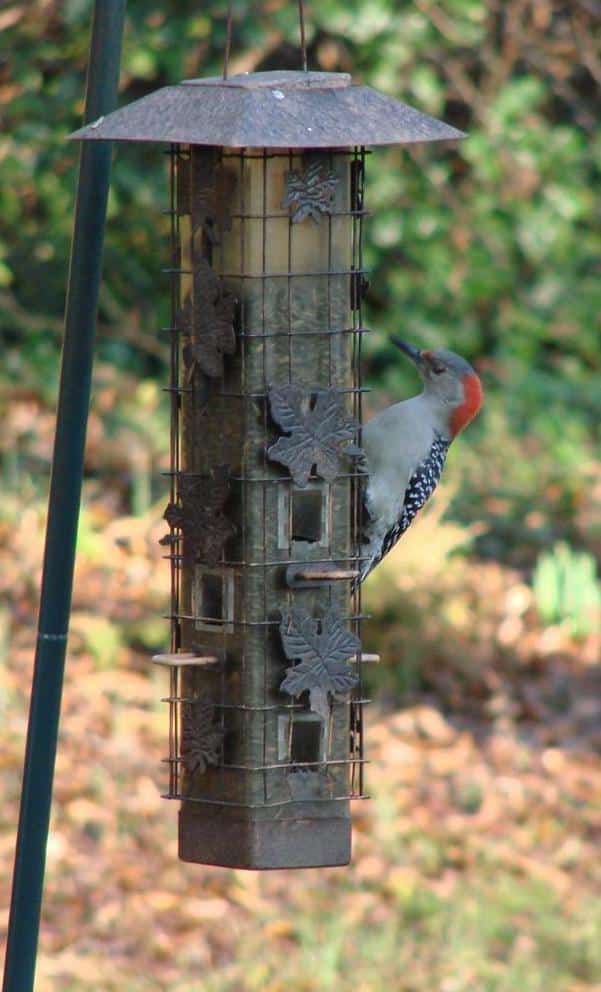Tube Bird Feeders
Tube bird feeders are some of the most popular types of feeders available. Simple and effective, particularly for the smaller birds. Read on for their pros and cons, and our tips to help you get the most out of your tube feeder.
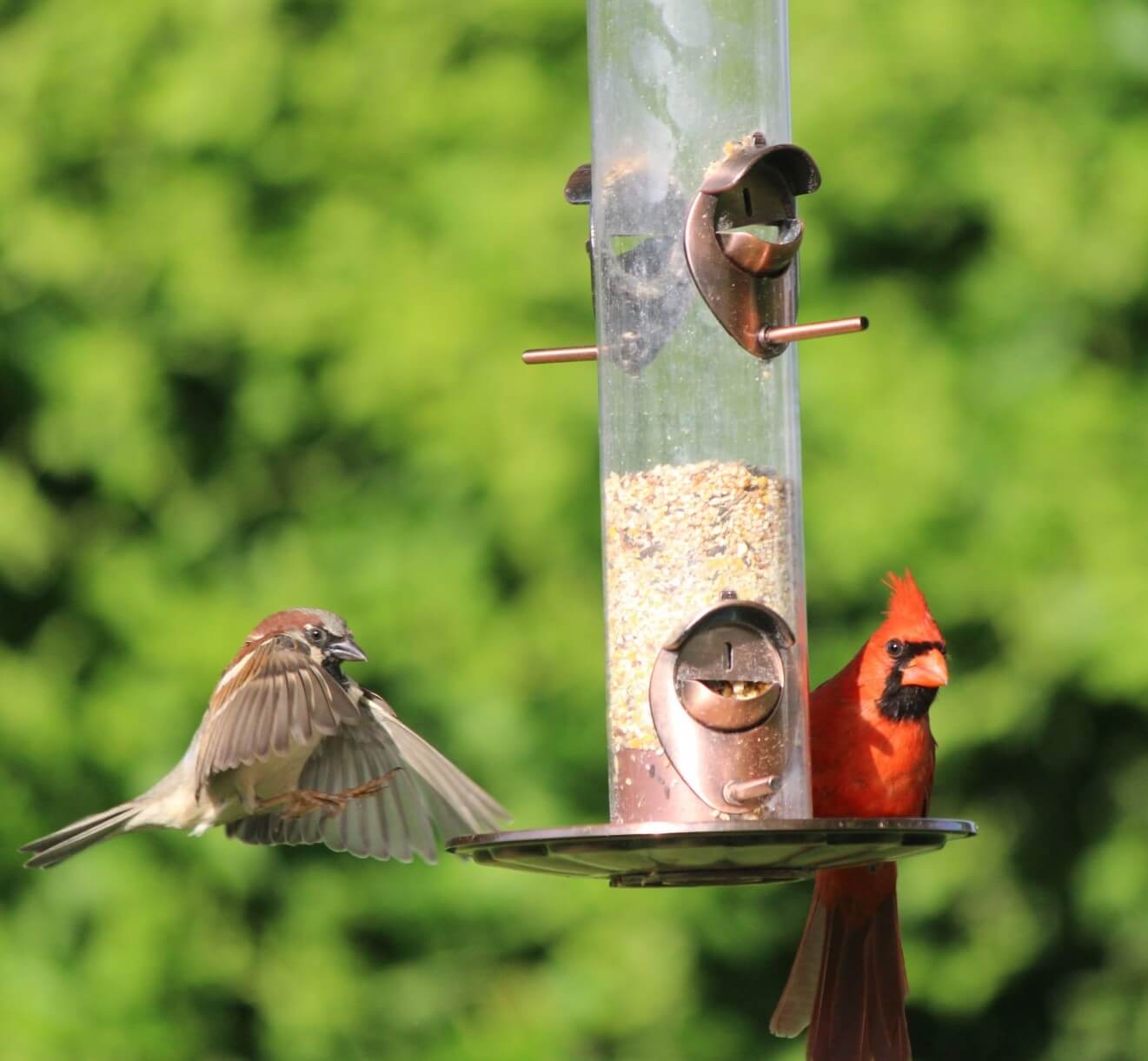
What is a Tube Feeder?
Tube feeders are tubes that hang vertically and have openings or screens that allow birds access to the seeds. Most types have small perches below the openings for smaller birds to use while feeding. Some come with a tray attached below the feeder itself to catch falling seeds, which can also serve as a feeding tray for larger birds.
Some of the birds that tube feeders can attract: goldfinches, finches, chickadees, siskins, redpolls, sparrows, grosbeaks, titmice, and nuthatches.
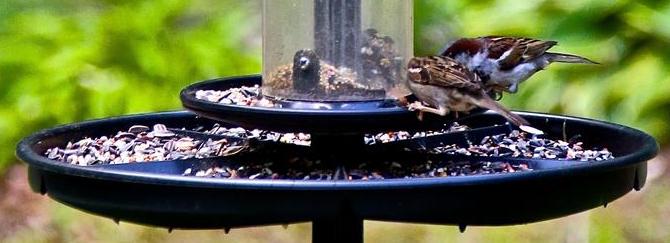 Tube feeder with a tray at the bottom
Tube feeder with a tray at the bottomPros and Cons
Tube feeders have several advantages over other feeders. First, the tube itself is pretty good at protecting the seed from rain or snow so that it won't spoil quickly. Second, they are effective at keeping larger birds, like jays and grackles, away so that smaller birds can have a relatively safe place to feed. Also, some tubes are quite large, which can be both good and bad. Larger tubes mean having to refill less frequently, but it also gives more time for seed to spoil. Last, some tube feeders come with perches above the openings so they can accommodate species that will feed upside down, like nuthatches, chickadees, and goldfinches.
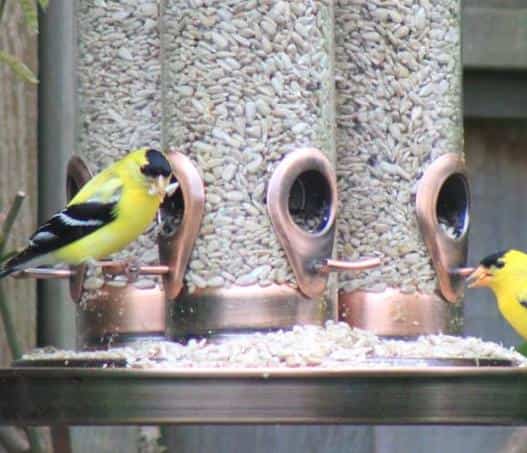 Notice the food extends below the openings and is hard for these goldfinches to reach.
Notice the food extends below the openings and is hard for these goldfinches to reach.One caution regarding tube feeders. Some of these feeders allow seed in the tube below the lowest feeding opening. We suggest not using these feeders. That seed can't be reached by the birds and will just sit there and spoil. Bacteria and mold will spread from these seeds upward and infect seed the birds can reach. And this increases the potential for disease in the birds. Not good! So, either stop using these feeders, add some way to block seed from being below the reach of the birds, or make a point of removing all unused seed every time you refill the seed.
Mounting and Care
You can mount a tube feeder on a pole or hang it from a hook or tree limb. If pole-mounted, we suggest placing a baffle below it to help discourage squirrels. These baffles look like large inverted funnels. They help prevent a squirrel from climbing up the pole to reach the feeder, and the slope makes it hard for a squirrel to hang on if it manages to jump on top of the baffle.
You should clean tube bird feeders preferably every two weeks. This reduces the chance of disease developing in the birds that visit your feeders. Read here for more details on care and cleaning of bird feeders.
Squirrels
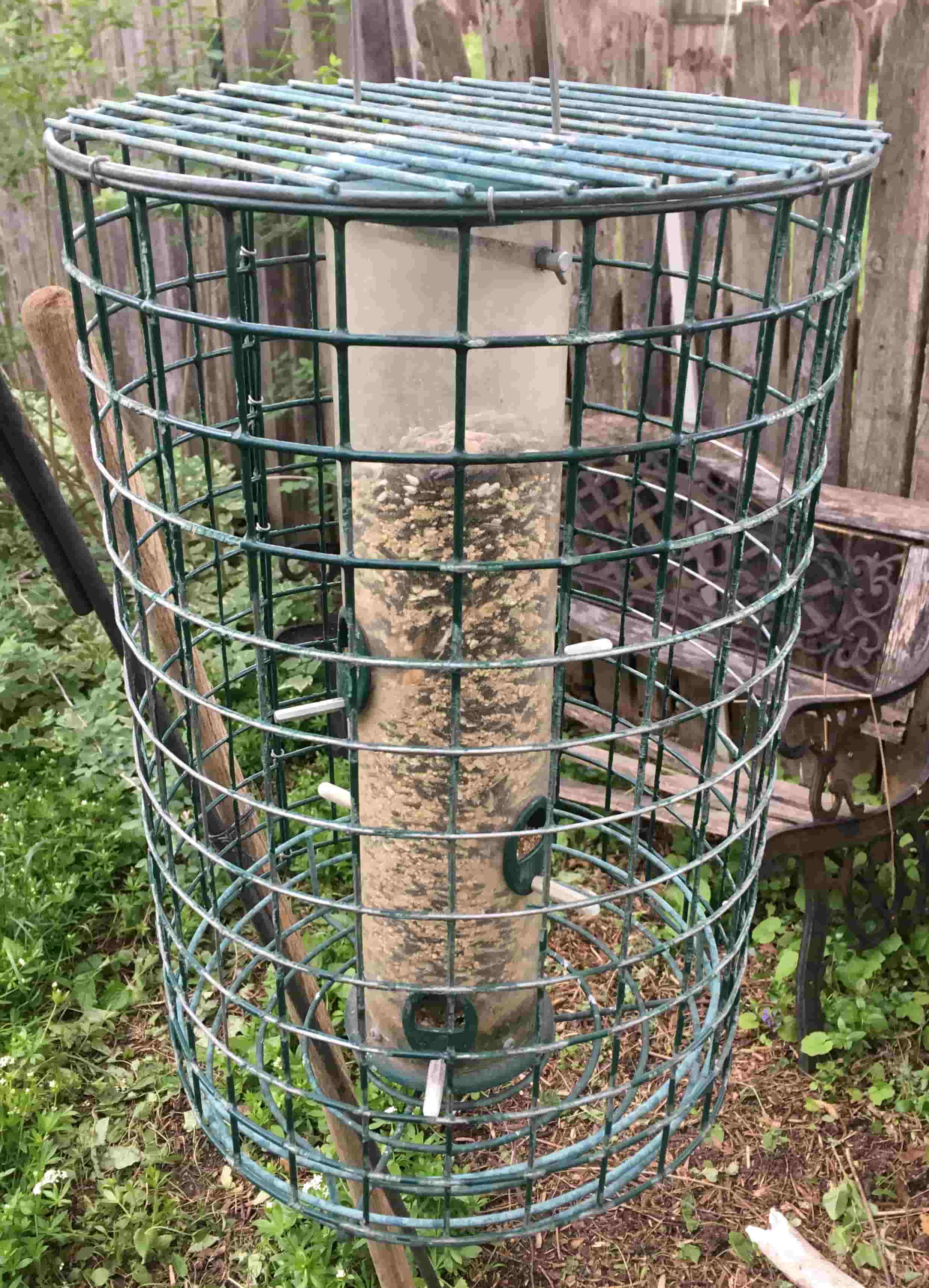
Some tube feeders are good at discouraging squirrels. The best ones have some means of keeping the food away from hungry squirrels. This is done in one of several ways. Some have metal screens with openings too small for squirrels, but large enough for small birds to come and go. Being metal, the screen is difficult for a squirrel to chew through, although I've seen squirrels try it.
Others have some mechanism, generally spring-loaded, that closes the opening when a squirrel jumps on. The general idea here is that the spring strength is such that small birds aren't heavy enough to close the opening, but the much heavier squirrel is. Over time, the spring tends to weaken, reducing the effectiveness of these feeders. Also, some have a mechanism that forcibly throws a squirrel from the feeder. I have to admit, watching a squirrel thrown from a feeder can be quite entertaining. Like the previous type of mechanism, I'm not sure how effective these are long-term.
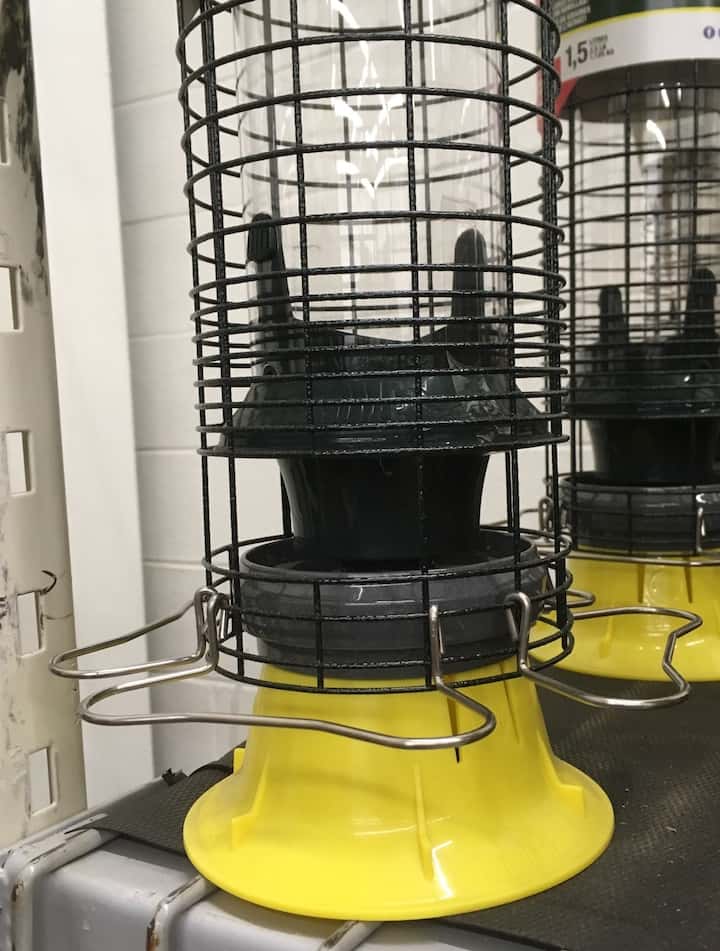 Open Open |
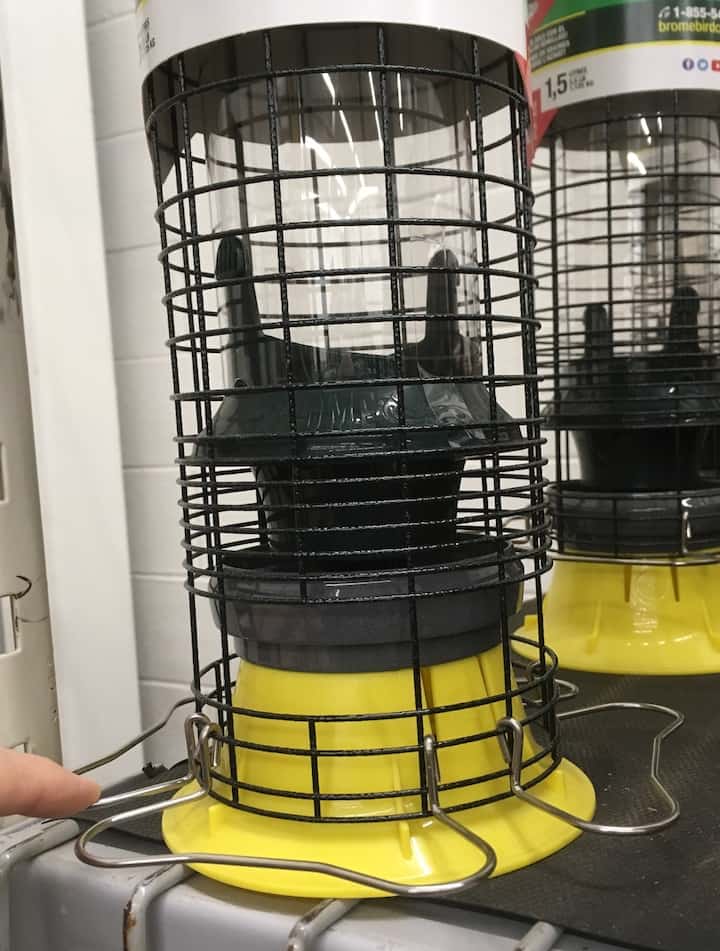 Closed with only slight pressure Closed with only slight pressure |
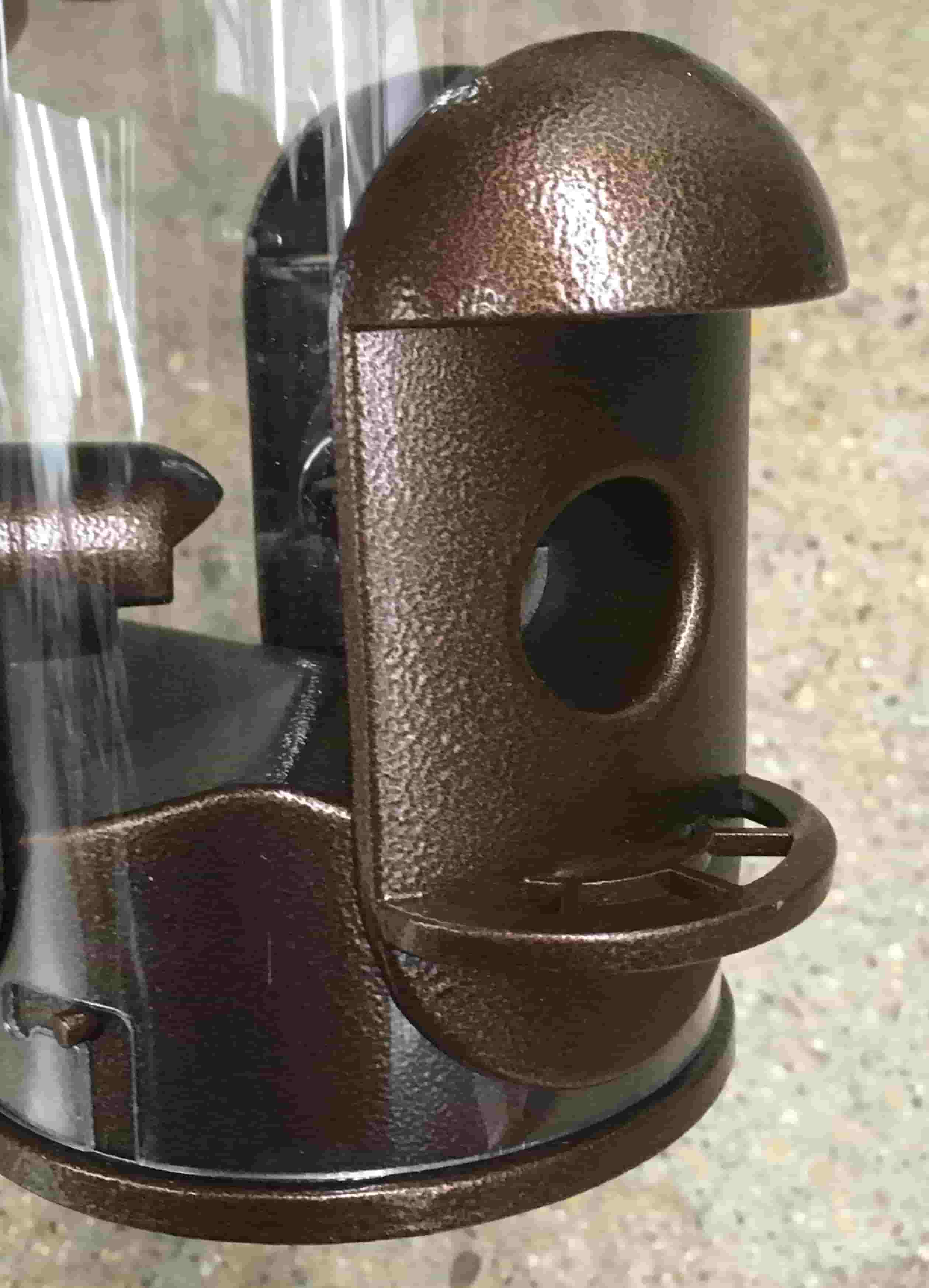 Metal surrounding the openings
Metal surrounding the openingsFor tube feeders without any of these exclusion mechanisms, those with metal surrounding the food openings are highly recommended. These prevent squirrels from expanding the openings to give them more access to the seed.
Summary
Tube bird feeders are popular, and for good reasons. Add one to your backyard to give the smaller birds a place to feed unmolested by the larger birds, and Enjoy!
